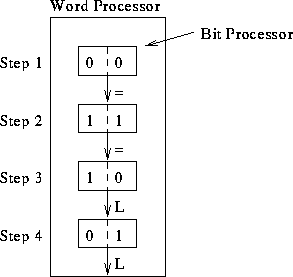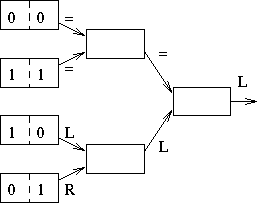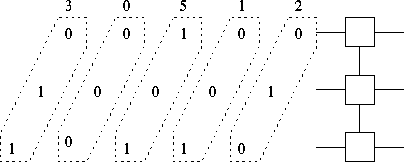
Compare, notify.
Assume we have k-bit numbers. Run time?

Compare, notify.
Run time?
Notes:
- Why not use a height 1 tree?
- Fan-in and fan-out in circuits.
Tom Kelliher, CS 315
Feb. 1, 1999
Read Section 1.1.3.
Algorithm assessment, simulating larger machines, example problems
Lower bounds.

Compare, notify.
Assume we have k-bit numbers. Run time?

Compare, notify.
Run time?
Notes:
What do they look like?

Five in, four out.
A lot of parallel work. Systolic computation.

Running time?
 steps on an
steps on an  -processor machine. Which algorithm is more
efficient?
-processor machine. Which algorithm is more
efficient?
Assume that the cost of running a P-processor machine for T steps is
 , where
, where  and
and  are constants and P = M or
are constants and P = M or
 . For what values of
. For what values of  and
and  is the first algorithm
cheaper to run? For what values of
is the first algorithm
cheaper to run? For what values of  and
and  is the second
algorithm cheaper to run?
is the second
algorithm cheaper to run?
 steps
on an
steps
on an  -processor machine. Which algorithm will run faster on an
N-processor machine? (Hint: Your answer depends on the relative sizes of
M and N, and you will need to use the fact that an N-processor
machine can simulate a P-processor machine with slowdown
-processor machine. Which algorithm will run faster on an
N-processor machine? (Hint: Your answer depends on the relative sizes of
M and N, and you will need to use the fact that an N-processor
machine can simulate a P-processor machine with slowdown  .)
.)